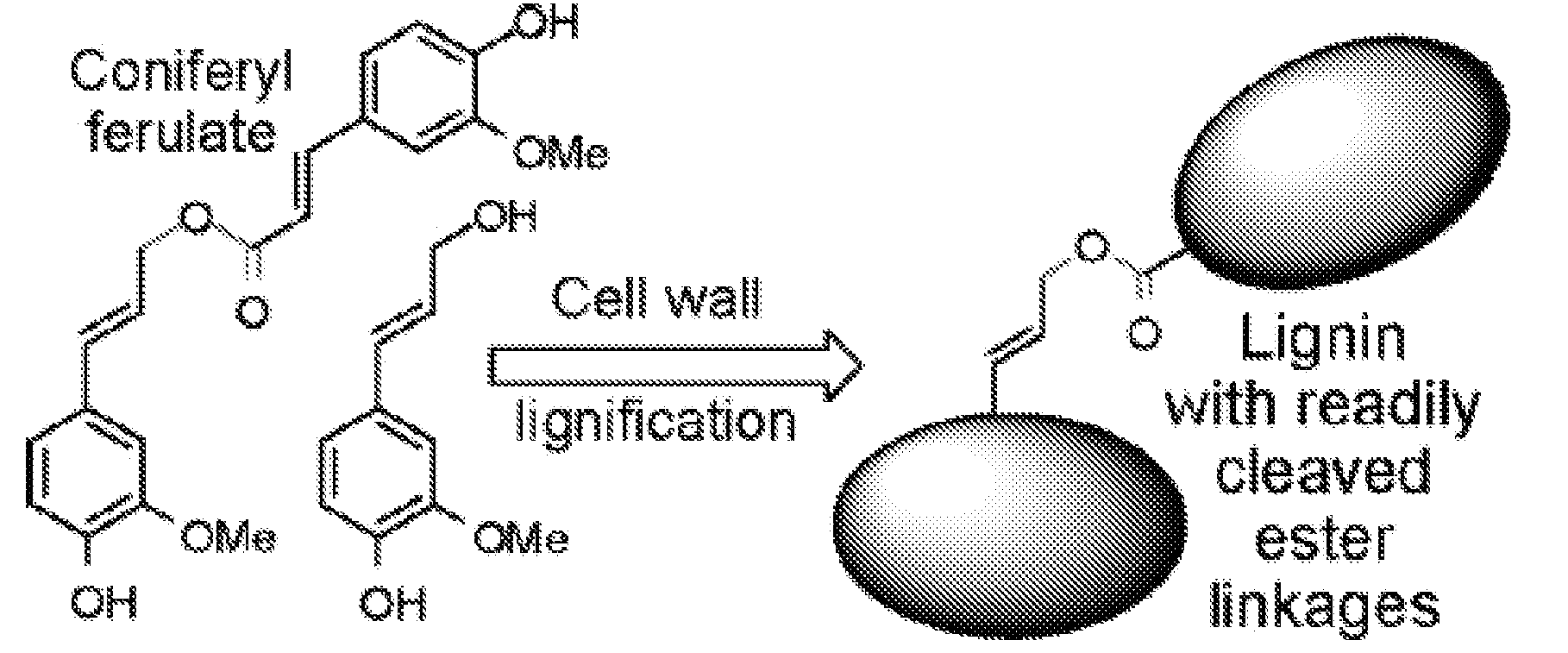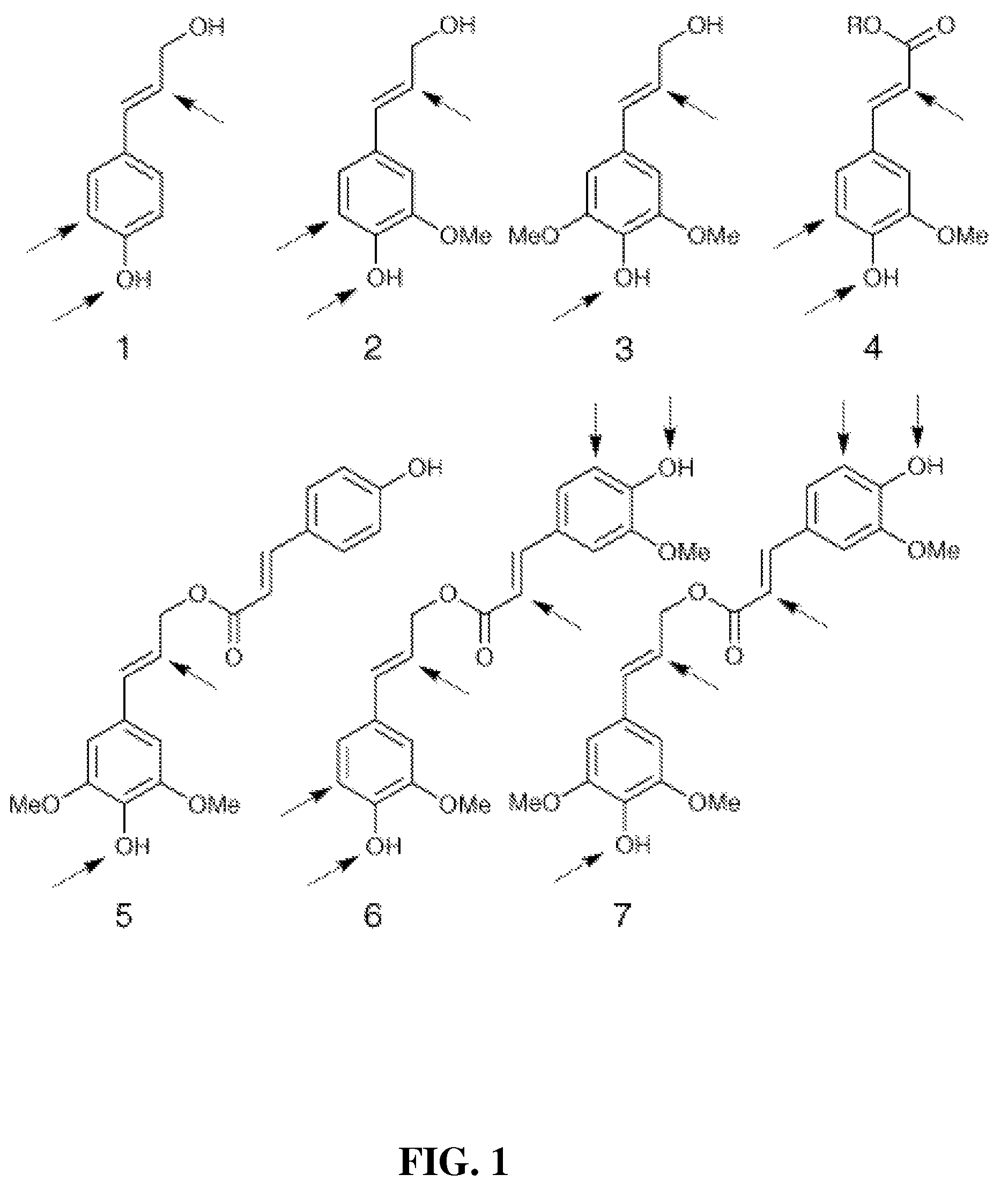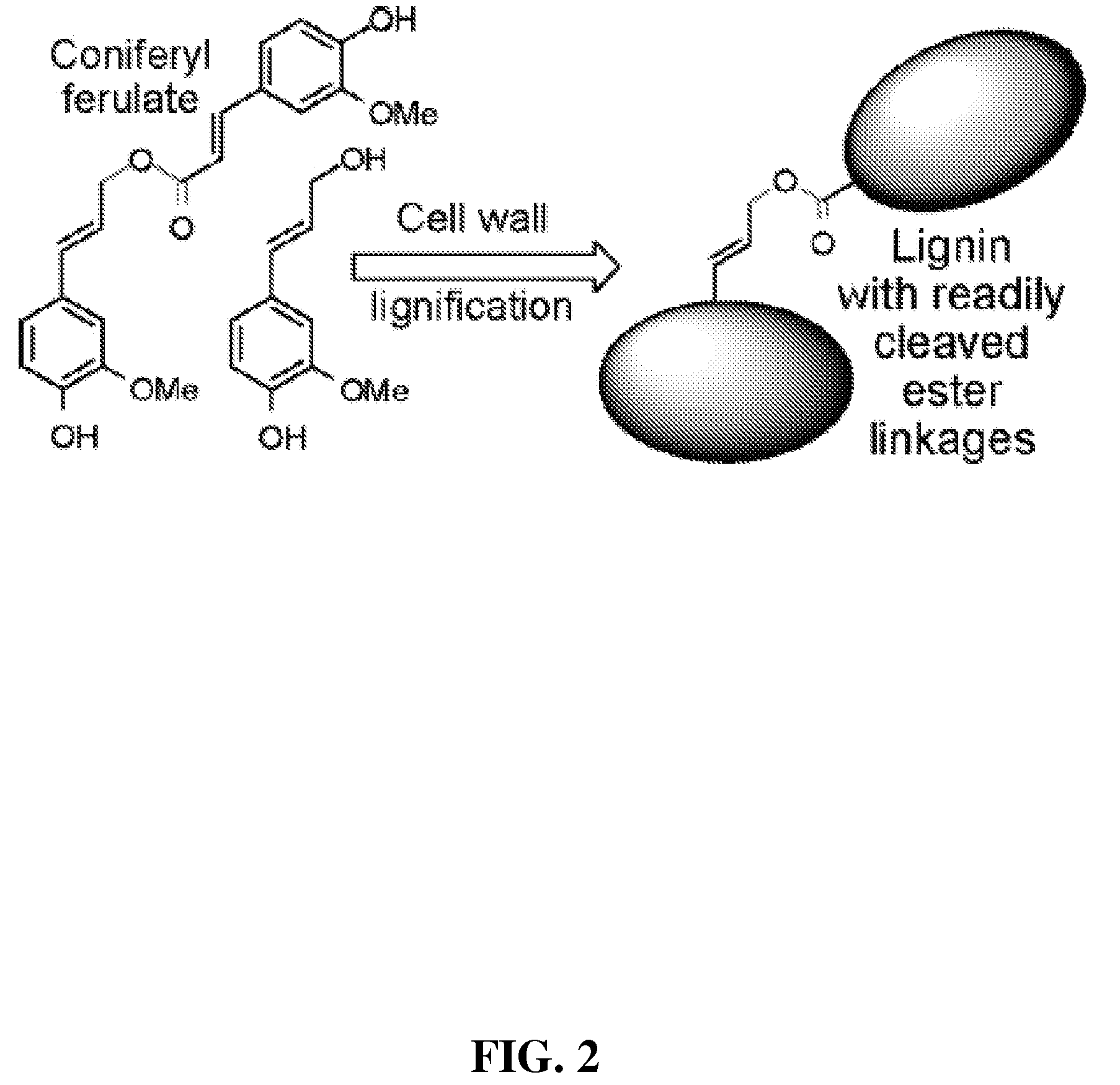Method for modifying lignin structure using monolignol ferulate conjugates
a technology of lignin and conjugates, which is applied in the field of modifying lignin structure using monolignol ferulate conjugates, can solve the problems of limiting the ability of ruminants to utilize otherwise digestible, limiting the enzyme access of lignin to cell wall polysaccharides, and p-hydroxyphenyl moieties not doing well
- Summary
- Abstract
- Description
- Claims
- Application Information
AI Technical Summary
Benefits of technology
Problems solved by technology
Method used
Image
Examples
examples
[0065]The following Examples are included solely to provide a more complete disclose of the invention disclosed and claimed herein. The Examples do not limit the scope of the claimed invention in any fashion.
[0066]Cell Wall Lignification:
[0067]Freshly isolated primary cell walls (˜1.05 g dry weight) from maize cell suspensions (Grabber, J. H.; Ralph, J.; Hatfield, R. D.; Quideau, S.; Kuster, T.; Pell, A. N. J. Agric. Food Chem. 1996, 44, 1453-1459) were stirred in 120 mL of homopiperazine-N,N′-bis-2-ethanesulfonic acid (Homopipes) buffer (25 mM, pH 5.5 with 4 mM CaCl2) and artificially lignified by adding separate solutions of lignin precursors (250 mg in 70 mL of 35% (v / v) dioxane / water) and H2O2 (30%, 225 μL in 90 mL water, ˜1.4 equiv) at 3 mL / h. Precursor mixtures were comprised of coniferyl alcohol substituted with 0, 20, 40, or 60% (by weight) of coniferyl-ferulate. Precursor treatments were replicated by carrying out two independent runs of the experiment. Precursors were also...
PUM
| Property | Measurement | Unit |
|---|---|---|
| pH | aaaaa | aaaaa |
| dry weight | aaaaa | aaaaa |
| solubility | aaaaa | aaaaa |
Abstract
Description
Claims
Application Information
 Login to View More
Login to View More - R&D
- Intellectual Property
- Life Sciences
- Materials
- Tech Scout
- Unparalleled Data Quality
- Higher Quality Content
- 60% Fewer Hallucinations
Browse by: Latest US Patents, China's latest patents, Technical Efficacy Thesaurus, Application Domain, Technology Topic, Popular Technical Reports.
© 2025 PatSnap. All rights reserved.Legal|Privacy policy|Modern Slavery Act Transparency Statement|Sitemap|About US| Contact US: help@patsnap.com



